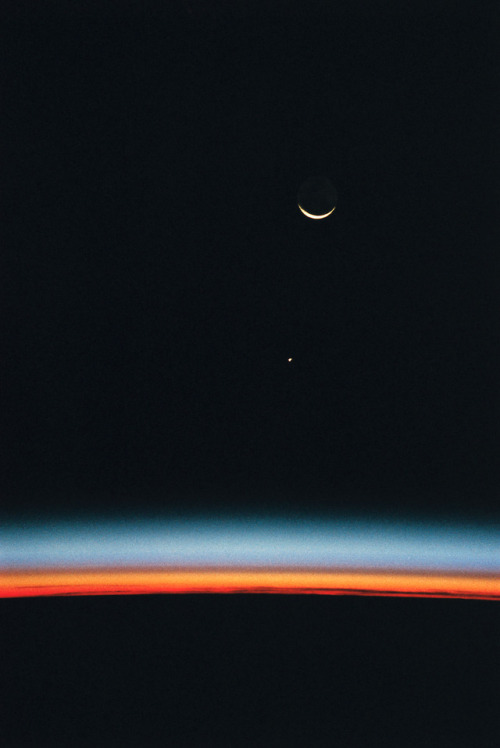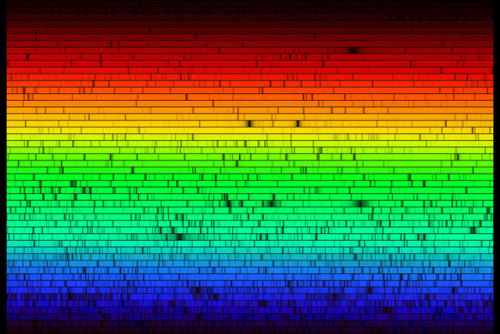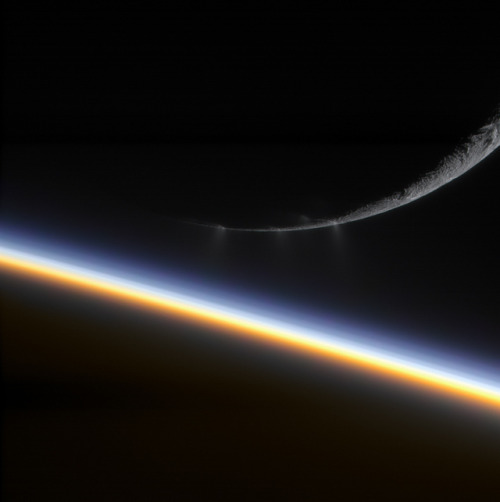Declining Arctic Sea Ice: The 2018 Arctic Report Card Found The Arctic Region Had The Second-lowest Overall

Declining Arctic sea ice: The 2018 Arctic Report Card found the Arctic region had the second-lowest overall sea-ice coverage on record. The map shows the age of sea ice in the Arctic ice pack in March 1985 (left) and March 2018 (right). Ice that is less than a year old is darkest blue. Ice that has survived at least 4 full years is white. Maps were provided by NOAA Climate.gov and based on data provided by Mark Tschudi./University of Colorado/CCAR. (NOAA Climate.gov)
Excerpt from this Washington Post story:
Over the past three decades of global warming, the oldest and thickest ice in the Arctic has declined by a stunning 95 percent, according the National Oceanic and Atmospheric Administration’s annual Arctic Report Card.
The finding suggests that the sea at the top of the world has already morphed into a new and very different state, with major implications not only for creatures such as walruses and polar bears but, in the long term, perhaps for the pace of global warming itself.
The oldest ice can be thought of as a kind of glue that holds the Arctic together and, through its relative permanence, helps keep the Arctic cold even in long summers.
“The younger the ice, the thinner the ice, the easier it is to go away,” said Don Perovich, a scientist at Dartmouth who coordinated the sea ice section of the yearly report.
If the Arctic begins to experience entirely ice-free summers, scientists say, the planet will warm even more, as the dark ocean water absorbs large amounts of solar heating that used to be deflected by the cover of ice. The new findings were published as climate negotiators in Poland are trying to reach a global consensus on how to address climate change.
In March, NASA scientists with the Operation IceBridge mission, which surveys the polar regions using research aircraft, witnessed a dramatic instance of the ongoing changes. Flying over the seas north of Greenland, in a region that usually features some of the oldest, thickest ice in the Arctic, they instead saw smooth, thin strips binding together the thicker, ridged pieces.
More Posts from Riekod and Others

5 Facts About Earth's Radiation Donuts 🍩
Did you know that our planet is surrounded by giant, donut-shaped clouds of radiation?

Here’s what you need to know.
1. The radiation belts are a side effect of Earth’s magnetic field

The Van Allen radiation belts exist because fast-moving charged particles get trapped inside Earth’s natural magnetic field, forming two concentric donut-shaped clouds of radiation. Other planets with global magnetic fields, like Jupiter, also have radiation belts.
2. The radiation belts were one of our first Space Age discoveries

Earth’s radiation belts were first identified in 1958 by Explorer 1, the first U.S. satellite. The inner belt, composed predominantly of protons, and the outer belt, mostly electrons, would come to be named the Van Allen Belts, after James Van Allen, the scientist who led the charge designing the instruments and studying the radiation data from Explorer 1.
3. The Van Allen Probes have spent six years exploring the radiation belts

In 2012, we launched the twin Van Allen Probes to study the radiation belts. Over the past six years, these spacecraft have orbited in and out of the belts, providing brand-new data about how the radiation belts shift and change in response to solar activity and other factors.
4. Surprise! Sometimes there are three radiation belts

Shortly after launch, the Van Allen Probes detected a previously-unknown third radiation belt, created by a bout of strong solar activity. All the extra energy directed towards Earth meant that some particles trapped in our planet’s magnetic field were swept out into the usually relatively empty region between the two Van Allen Belts, creating an additional radiation belt.
5. Swan song for the Van Allen Probes

Originally designed for a two-year mission, the Van Allen Probes have spent more than six years collecting data in the harsh radiation environment of the Van Allen Belts. In spring 2019, we’re changing their orbit to bring the perigee — the part of the orbit where the spacecraft are closest to Earth — about 190 miles lower. This ensures that the spacecraft will eventually burn up in Earth’s atmosphere, instead of orbiting forever and becoming space junk.
Because the Van Allen Probes have proven to be so hardy, they’ll continue collecting data throughout the final months of the mission until they run out of fuel. As they skim through the outer reaches of Earth’s atmosphere, scientists and engineers will also learn more about how atmospheric oxygen can degrade satellite measurements — information that can help build better satellites in the future.
Keep up with the latest on the mission on Twitter, Facebook or nasa.gov/vanallenprobes.

This scene, captured with a 35mm camera from inside the Space Shuttle Endeavour, shows Jupiter rising above the airglow over Earth’s horizon. The crescent Moon is at top frame.
Credit: NASA
Take your time. You’ll get it.

This is the visible spectrum of the light from the sun. And if you have played with white light and prisms before, it might come as a huge surprise to you to know that the spectrum from the sun is actually not continuous.

Why is it not ? The dark patches in the above spectrum arise from gas at or above the Sun’s surface absorbing sunlight emitted below.

Source
Since there are different types of gases that compose the sun, there are numerous wavelengths of light that get absorbed by these gases.

Source: xkcd
How do we know which line corresponds to which ? Well, it’s because we have a periodic table, and we know the spectrum of all the elements in it:

Source
And then it’s a matter of solving the jigsaw puzzle of fitting the spectrum with the tiles that you have. When we do so, we obtain the following composition of elements:

Source: Earth Blog
We can even take it one step further by finding the composition of other neighboring stars as well.

Source: Potsdam University
All of this information about the star can be captured from a simple spectrum. And this is why one of the most important tool that an astronomer has about an object is it’s spectrum.
Have a good one!
Edit: Added all sources for the images.

this morning NASA abandoned their mars rover Opportunity (aka Oppy) because it (she) got hit by a storm on Mars and it knocked her camera and wheels out and her last words to the team were “my battery is low and it is getting cold”. I know she’s a machine but I’m devastated. Oppy is the one who discovered water on Mars. RIP oppy ily space baby
Tools of the Trade: How Parker Solar Probe Will Study the Sun
Our Parker Solar Probe will get closer to the Sun than any spacecraft has ever gone – it will fly right through the Sun’s corona, part of the Sun’s atmosphere.

This spacecraft is full of cutting-edge technology, from its heat shield down to its guidance and control systems. It also carries four suites of advanced instruments designed to study the Sun in a multitude of ways.
1. Measuring particles
Two of Parker Solar Probe’s instrument suites are focused on measuring particles – electrons and ions – within the corona.
One of these particle-measuring instrument suites is SWEAP (Solar Wind Electrons Alphas and Protons). SWEAP counts the most common particles in the solar wind – the Sun’s constant outflow of material – and measures their properties, like velocity, density and temperature. Gathering this information about solar wind particles will help scientists better understand why the solar wind reaches supersonic speeds and exactly which part of the Sun the particles come from.

One instrument in the SWEAP suite is the Solar Probe Cup. Most of the instruments on Parker Solar Probe stay safe and cool in the shadow of the heat shield, but the Solar Probe Cup is one of the few that sticks out. That’s so it can capture and measure particles streaming straight out from the Sun, and it had to go through some intense testing to get ready for this position in the Sun’s incredibly hot corona.

Credit: Levi Hutmacher/Michigan Engineering
The ISʘIS suite (pronounced EE-sis, and including the symbol for the Sun in its acronym) also measures particles. ISʘIS is short for Integrated Science Investigation of the Sun, and this instrument suite measures particles that move faster – and therefore have more energy – than the solar wind.
These measurements will help scientists understand these particles’ lifecycles – where they came from, how they got to be traveling so fast (these particles can reach speeds more than half the speed of light!) and what path they take as they travel away from the Sun and into interplanetary space.

2. Taking pictures – but not of the Sun’s surface.
WISPR (Wide-Field Imager for Parker Solar Probe) has the only two cameras on Parker Solar Probe – but they’re not pointed directly at the Sun. Instead, WISPR looks out the side of the spacecraft, in the direction it’s traveling, looking at the space Parker Solar Probe is about to fly through. From that vantage point, WISPR captures images of structures within the corona like coronal mass ejections, or CMEs. CMEs are clouds of solar material that occasionally explode from the Sun at millions of miles per hour. Because this solar material is magnetized, CMEs can trigger geomagnetic storms when they reach Earth – which, in turn, can cause effects like auroras and even, in extreme cases, power outages.

Right now, our observations of events like these come from satellites orbiting near Earth, so WISPR will give us a whole new perspective. And, scientists will be able to combine WISPR’s images with Parker Solar Probe’s direct particle measurements to get a better idea of how these structures change as they travel.

3. Studying electric & magnetic fields
The FIELDS instrument suite is appropriately named: It’s what scientists will use to study the electric and magnetic fields in the corona.
Electric and magnetic fields are key to understanding what happens, not only on the Sun, but throughout space, because they are the primary driver accelerating charged particles. In particular, a process called magnetic reconnection – when magnetic field lines explosively realign, sending particles rocketing away at incredible speeds – is thought to drive solar explosions, as well as space weather effects on Earth, like the aurora.

FIELDS measures electric and magnetic field at high time resolution, meaning it takes lots of measurements in a short amount of time, to track these processes and shed some light on the mechanics underlying the Sun’s behavior. FIELDS’ measurements are precisely synced up with those of the SWEAP suite (one of the sets of instruments studying particles) so that scientists can match up the immediate effects that electric and magnetic fields have on the material of the solar wind.

Parker Solar Probe launches summer 2018 on its mission to study the Sun. Keep up with the latest on the mission at nasa.gov/solarprobe or follow us on Twitter and Facebook.
Make sure to follow us on Tumblr for your regular dose of space: http://nasa.tumblr.com.
As I get older I’m finding that a lot of the “intellectuals” I used to admire are actually just condescending and pretentious. And also realizing how much more important it is to be present, considerate, and empathetic because nobody really knows what they’re talking about and anyone who claims to know everything about anything is feeding you bs.

Enceladus and Saturn
Image credit: Gordan Ugarkovic
-
 varvesivy liked this · 6 years ago
varvesivy liked this · 6 years ago -
 gratefuldaddy-blog1 liked this · 6 years ago
gratefuldaddy-blog1 liked this · 6 years ago -
 anahfan-blog1 reblogged this · 6 years ago
anahfan-blog1 reblogged this · 6 years ago -
 riekod reblogged this · 6 years ago
riekod reblogged this · 6 years ago -
 chaoticshitpost liked this · 6 years ago
chaoticshitpost liked this · 6 years ago -
 xoxogossipgab reblogged this · 6 years ago
xoxogossipgab reblogged this · 6 years ago -
 gamingmadereality liked this · 6 years ago
gamingmadereality liked this · 6 years ago -
 tabbytoebeans reblogged this · 6 years ago
tabbytoebeans reblogged this · 6 years ago -
 tabbytoebeans liked this · 6 years ago
tabbytoebeans liked this · 6 years ago -
 littledarkage reblogged this · 6 years ago
littledarkage reblogged this · 6 years ago -
 whimsypeddler reblogged this · 6 years ago
whimsypeddler reblogged this · 6 years ago -
 whimsypeddler liked this · 6 years ago
whimsypeddler liked this · 6 years ago -
 pandakim0204 liked this · 6 years ago
pandakim0204 liked this · 6 years ago -
 169boys-blog liked this · 6 years ago
169boys-blog liked this · 6 years ago -
 followthestrangetrails reblogged this · 6 years ago
followthestrangetrails reblogged this · 6 years ago -
 followthestrangetrails liked this · 6 years ago
followthestrangetrails liked this · 6 years ago -
 goodbyearthur reblogged this · 6 years ago
goodbyearthur reblogged this · 6 years ago -
 alldaystress reblogged this · 6 years ago
alldaystress reblogged this · 6 years ago -
 essie-essex liked this · 6 years ago
essie-essex liked this · 6 years ago -
 just-jammmin liked this · 6 years ago
just-jammmin liked this · 6 years ago -
 theacenstuff liked this · 6 years ago
theacenstuff liked this · 6 years ago -
 thewildofheart1134 reblogged this · 6 years ago
thewildofheart1134 reblogged this · 6 years ago -
 congealed-dairy liked this · 6 years ago
congealed-dairy liked this · 6 years ago -
 quirkygown reblogged this · 6 years ago
quirkygown reblogged this · 6 years ago -
 absurda-xx reblogged this · 6 years ago
absurda-xx reblogged this · 6 years ago -
 absurda-xx liked this · 6 years ago
absurda-xx liked this · 6 years ago -
 unsympatheticchemprof reblogged this · 6 years ago
unsympatheticchemprof reblogged this · 6 years ago -
 lor3n6394 reblogged this · 6 years ago
lor3n6394 reblogged this · 6 years ago -
 lor3n6394 liked this · 6 years ago
lor3n6394 liked this · 6 years ago -
 that-twink-over-there reblogged this · 6 years ago
that-twink-over-there reblogged this · 6 years ago -
 academicoperdido reblogged this · 6 years ago
academicoperdido reblogged this · 6 years ago -
 rjzimmerman reblogged this · 6 years ago
rjzimmerman reblogged this · 6 years ago